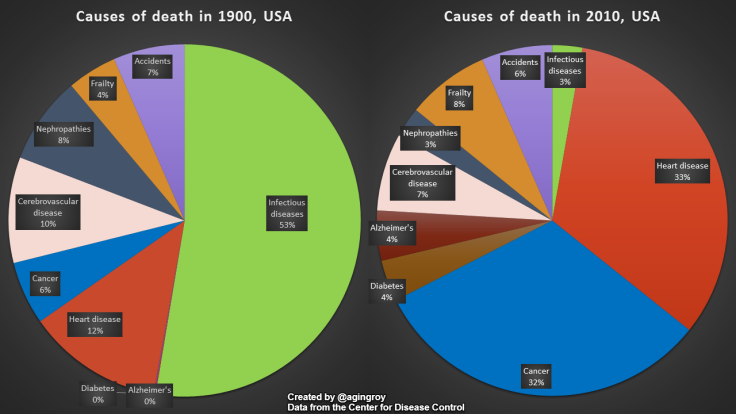How Cause Of Death Has Evolved With Medical Advances: Welcome To The Party, Alzheimer’s And Diabetes

Here’s the good news: We aren’t dying from infectious diseases anymore. Now onto the long, unfurling scroll of bad news: We’re eating ourselves to death and our brains are dying long before tiny invaders cause our bodies to break down.
The Centers for Disease Control and Prevention offers some eye-opening data regarding the most common causes of death in the United States, beginning with the turn of the 20th century and ending a tenth of the way through our current one. Cancer and heart disease jump out before anything else, rivaled only perhaps by the gargantuan decline in infectious diseases over the 110-year period. Long story short: We’re living longer, but we aren’t necessarily healthier.
It’s something of a misnomer to say that humans didn’t live as long in 1900. Sure, the average life span was 46 years for men and 48 years for women, but averages aren’t helpful when it comes to age. If you managed to live past infancy, your chance of living into middle age (by today’s standards) skyrocketed. And even in your 30s and 40s, your brain was still too young to succumb to degenerative diseases such as Alzheimer’s, which didn’t catch as a diagnosis until several decades later.
Eventually, we developed vaccines. We eradicated disease. In the meantime, we shirked manual labor jobs for idea-driven careers that just demand we have fingers for typing and an index finger for mouse-clicking. Our waistlines expanded, and our hearts paid the price. Where infectious disease made up 53 percent of deaths in 1900, it now makes up only three percent. Cancer and heart disease now make up 65 percent of all deaths.

Published by Medicaldaily.com



























